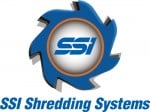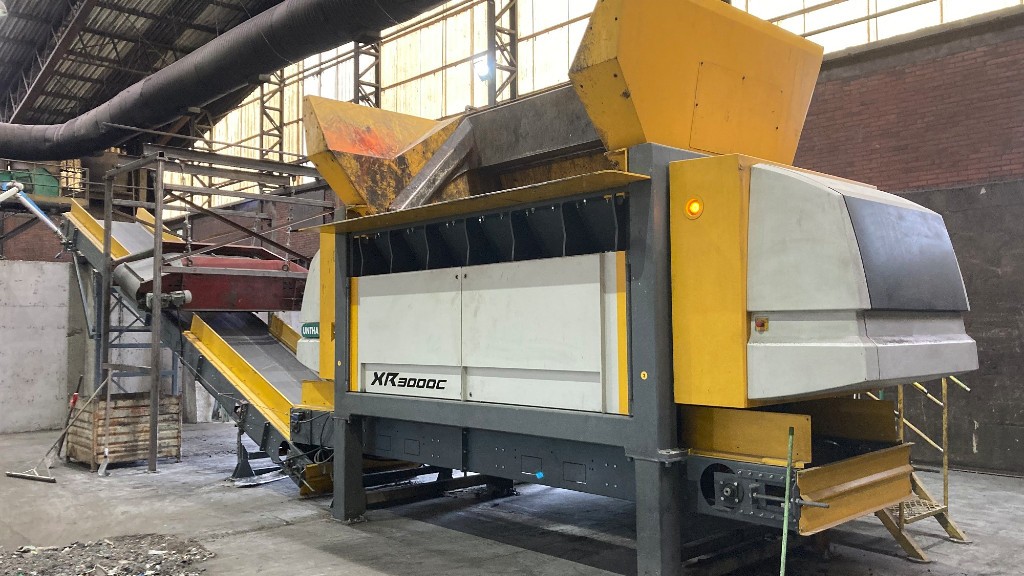(VIDEO) SSI Shredding Systems finds a mobile solution to recycle degraded wind turbine blades
Wind power energy is a green industry prevalent throughout the United State yet recycling used wind turbine blades has become a sizable problem. There are already over 70,000 wind turbines in the U.S. alone.
Recycling wind turbine blades is a big deal, not just because it represents a large source of clean power, but because it sheds light on a side of wind energy that isn't often thought of: How are those giant wind turbine blades destroyed?
Wind turbine blades must be rebuilt often – sometimes as frequently as every 10 to 12 years. The blades break down from flexing to erosion, UV damage, lightning strikes, and recalls due to delamination and cracking. Manufacturers construct the blades using various resources, including fibreglass, carbon fibre, balsa wood, foam, and resin.
The variety of manufacturing materials makes them difficult to repair or reuse. Instead, energy companies leave old wind turbine blades on the ground next to their old towers or send them to landfills, counteracting a large part of this clean energy.
There are some solutions in development to address this growing concern, such as recycling these massive waste products, but it's still a new concept.
"We're in the infancy of wind turbine blade recycling," says Lee Sage, industrial sales specialist at SSI Shredding Systems, Inc. "The problem is the U.S. dove into wind energy, never considering the end of life of those components and where they would go. It was always going to be someone else's problem."
Enter Sean Baisden, the owner of Pitbull Blade Demolition, who was tasked to destroy the thousands of wind turbine blades that are decommissioned each year. To keep his costs down, Baisden needed a machine that was capable of shredding the blades while remaining small enough to move from wind farm to wind farm. He reached out to SSI Shredding Systems who went on to design the solution to this growing waste problem.
The Dual-Shear M120 two-shaft shredder puts blade recycling on autopilot
Due to their components and enormous profile, wind turbine blades are extremely difficult to shred. The Dual-Shear M120 two-shaft shredder has the torque and technology to break down and recycle wind turbine blades. For over two decades, the Dual-Shear M120 has been used in bulky item reduction for applications like tires, appliances, aluminum, and electronic scrap.
"There are a lot of different aspects that go into working or developing a new application, like a wind turbine blade. This has been three years in the works," Sage reports, referring to the longer development time to ensure the machine was ready for the task.
Creating a mobile shredder can be challenging since it must be within the weight and height constraints set by the Department of Transportation. Nevertheless, moving the shredder to various turbine disposal sites is invaluable to Pitbull Blade Demolition. This is one of the reasons SSI was tasked with the job. The mobile shredder has been in SSI's wheelhouse for decades, so it was no problem for their team of engineers to design the M120 with a mobile retrofit.
The shredder itself is mounted on a 53-foot flatbed trailer and hauled with a diesel-powered vehicle. The shredder rotates at a low speed, uses high-torque hydraulics, and runs on a Caterpillar motor. Pre-cut turbine blades are fed into a hopper on top which then pulverizes them into smaller pieces. The waste is then moved up a conveyer belt built with a skid-mount design that empties the shreds into a truck or dumpster.
"An average blade takes about two to three hours to shred," Baisden says, "and it's shredded down into sub-four-inch pieces. We then supply these shreds to REGEN Fiber, a new company in Iowa that recycles them for reuse as raw materials in various industries. So, none of the material whatsoever goes to the landfill from the wind turbine [blade]."
REGEN Fiber recently launched its process for converting shredded turbine blades into reinforcement fibre materials that add strength and durability to concrete and mortar applications such as pavement, slabs-on-grade, and precast products.
The Dual-Shear M120 two-shaft shredder is easy to operate and requires minimal maintenance compared to daily maintenance for most industrial shredders. Every part of the unit is replaceable.
Nearly all SSI shredders are built to order and can be customized. SSI applied its engineering experience to meet the vision and needs of Pitbull Blade Demolition.



